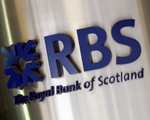Rory Cullinan has begun 2014 in post as the chief executive of Royal Bank of Scotland’s new internal bad bank.
He is working up a business plan that will see the Capital Resolution Group deliver the accelerated run-down of £38bn of assets, including around £18bn of troubled property loans.
The key word here is accelerated.
The bank has a deadline of the end of 2016 to work through this £38bn of loans, with a target of a 70% reduction by the end of 2015.
While Cullinan has form – during his five-year tenure with the now-defunct non-core division he has overseen the offloading of £221bn of assets – the market is still keen to learn just how he plans to reach this target.
The obvious answer is portfolio sales of both assets and loans.
The market for non-performing loans has quickly gathered pace over the past few years – around €15bn (£12.5bn) of NPLs were traded in the first eight months of 2013, according to PwC – and appetite from buyers continues to build.
In addition, values are higher, therefore RBS could have higher recovery rates on similar stock that has already been traded, according to one source.
NPL sales would be an about-turn for the bank. It swore off the method after its £1.4bn Project Isobel UK deal and the sale of a Spanish bank in 2011.
RBS did return to the market with an asset portfolio last year, offloading the £65m Project Sapphire to US hedge fund Varde Partners.
However, the problem for RBS is the granular nature of loans that it has left after five years of clearing out most of the attractive stock. Will buyers be lining up for a portfolio without at least one or two tempting assets?
And even if buyers are keen, they are certainly going to demand a significant discount to face value, resulting in a greater loss for the bank.
One solution, according to a former RBS insider, would be to draft in outside expertise for the management of these assets by setting up partnerships with specialist providers.
This could be done on either a sector or geographic basis, following the example of its rival Lloyds, which has established a number of tie-ups with, for example, fund manager SWIP, residential specialist Grainger, Irish developer Green Property and hotel firm BDL.
One source suggests that some clients that were designated as non-core five years ago could be transferred to become core again, thus reducing non-core ownership.
This would also provide the bank with the benefit of increasing its core book, which has seen a bigger run-off than expected, satisfying pressure from the government to lend more.
The future of West Register – the bank’s £3.7bn internal property company – will also be revealed in Cullinan’s business plan. While it is expected to be transferred to CRG, its leadership and structure are under fire following accusations in the Tomlinson report of a land grab at the expense of small businesses.
A further challenge for the bank is staff retention. RBS announced Cullinan’s official appointment in December, but made no mention of any other key appointments.
There is an expectation that the teams that have been managing the bank’s non-core assets will be retained, but as one source said: “Senior management will be incentivised, but how do you retain foot soldiers who are effectively working themselves out of a job.”
And not all senior figures are staying. Blair Lewis, the bank’s former head of restructuring, has left RBS to start a new role this week, heading loan servicer Hatfield Philips.
A spokesman for the bank said: “There will be further announcements on structure and leadership teams in due course.”
This could coincide with the group’s annual results at the end of February, when a strategic review of the bank’s strategic funding division is going to be announced.
And Cullinan’s grand plan will be revealed.
RBS Capital Resolution Group
? The Capital Resolution Group includes RBS Capital Resolution, which will be responsible for the accelerated rundown of £38bn of assets.
? The £38bn of funded assets attract £116bn of risk-weighted asset equivalent; that is, they comprise 5% of the bank’s balance sheet but take up 20% of its capital.
? While the internal bad bank is of a similar size to the current non-core division, the assets have been selected on a different basis and no direct comparisons can be drawn.
? At 31 December 2013, around 50% of the portfolio’s funded assets were from non-core (excluding Ulster Bank), 20% from Ulster Bank (core and non-core) and the remainder were from UK corporate, international banking and markets, most of which are managed by the Global Restructuring Group.
? £10bn to £12bn of assets currently managed in non-core will be returned to relevant core divisions.
bridget.o’connell@estatesgazette.com











